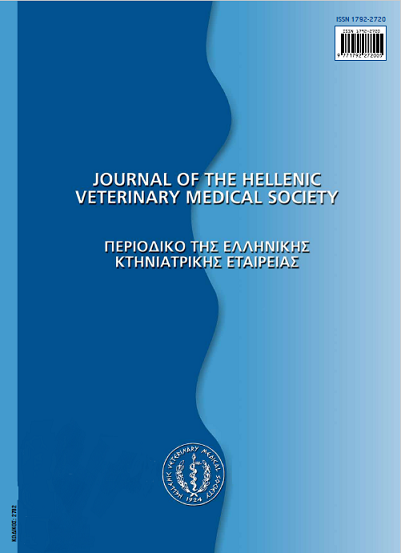Paraoxonase activities and oxidative status during late pregnancy and postpartum period in dairy cattle with and without retained fetal membrane

Abstract
The aim of this study was to evaluate serum paraoxonase 1 (PON1) activities, total antioxidant capacity (TAC), total peroxidation (TPX), oxidative stress index (OSI) and their associations with Retained fetal membrane (RFM) in late pregnancy and postpartum period. Possible relationships have been investigated between these markers and other relevant blood parameters also. Totally 266 pregnant cows were included in this study. Samples were taken in during late pregnancy and postpartum periods. The cows were divided into two groups after giving birth as RFM and Non-Retained fetal membrane (NRFM). The TAC, TPX and OSI values were not different in RFM compared to NRFM in both periods. The PON1 activities of RFM group in both periods were lower than those of the NRFM, however; these variations were not statistically significant. PON1 activities was statistically higher in the late pregnancy both RFM and NRFM groups than postpartum. This observation point out oxidative stress could not relate to pathogenesis of RFM. The PON1 activity was increased physiologically in pregnant cows, and more information is needed to determine whether PON1 may be used to identify cows at high risk of developing RFM. Decreasing serum urea/creatinine ratio, globulin and total protein concentration and increasing albumin/globulin ratio might be a parameter to contributing use in diagnosis of RFM.
Article Details
- How to Cite
-
DURAK, M., YOKUS, B., & ERCAN, N. (2018). Paraoxonase activities and oxidative status during late pregnancy and postpartum period in dairy cattle with and without retained fetal membrane. Journal of the Hellenic Veterinary Medical Society, 68(1), 45–50. https://doi.org/10.12681/jhvms.15555
- Issue
- Vol. 68 No. 1 (2017)
- Section
- Research Articles

This work is licensed under a Creative Commons Attribution-NonCommercial 4.0 International License.
Authors who publish with this journal agree to the following terms:
· Authors retain copyright and grant the journal right of first publication with the work simultaneously licensed under a Creative Commons Attribution Non-Commercial License that allows others to share the work with an acknowledgement of the work's authorship and initial publication in this journal.
· Authors are able to enter into separate, additional contractual arrangements for the non-exclusive distribution of the journal's published version of the work (e.g. post it to an institutional repository or publish it in a book), with an acknowledgement of its initial publication in this journal.
· Authors are permitted and encouraged to post their work online (preferably in institutional repositories or on their website) prior to and during the submission process, as it can lead to productive exchanges, as well as earlier and greater citation of published work.


